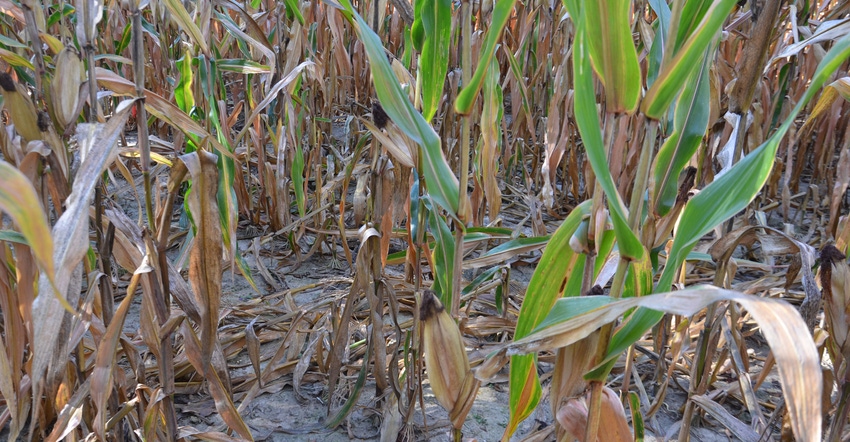
If corn lodged before you finished harvest this year, why did it happen? Was it just a few stalks here and there, or was it widespread? Was there enough lodging to make harvest more difficult? Did you leave corn behind?
Sometimes you know why corn lodged. Perhaps you left it out longer than you like, hoping for late-season drying. Maybe a windstorm hit when soils were soft. However, sometimes the cause isn’t so obvious.
Related: Ear size varies on late-emerging plants
“If you just assume it was a storm and don’t look more closely, you might miss important clues,” says Dave Nanda, director of genetics for Seed Genetics Direct, sponsor of Corn Watch ’20. “Take time to look at stalks and think about the field. Arrive at possible answers. Then you will be in a better position to make it less likely that lodging is a problem in 2021.”
Stalk rots. The most common stalk rot is caused by a fungus, colletotrichum, or anthracnose, which also can cause leaf blight. “You will find shiny black dots on the outer rind, and it looks like shoe polish,” Nanda says. “Cut stalks open, and the pith will be turning black, especially at the nodes.”
Other stalk roots can also infect plants and cause disease, Nanda says. And if you find stalk rot, you may want to look further. Often, stalk rot is a secondary cause. Perhaps stalks were stressed by hot, dry weather, setting them up for diseases later. Or perhaps there was mechanical or feeding injury that opened the door to disease.
Hybrid difference to disease. In years when you find stalk rot, you may find it more in one hybrid than another. Nanda notes that hybrids may differ in susceptibility to stalk rot. However, it’s possible they also differ in resistance or susceptibility to leaf diseases, which strike earlier in the season. Perhaps gray leaf spot invaded and set up the hybrid up stalk rot later. That’s why season-long scouting is so important, Nanda says.
You may also find less lodging in fields where you sprayed fungicides. Perhaps plants stayed healthier longer.
Stalk strength vs. wind. No hybrid will stand up completely to 90- to 100-mile-per-hour winds. Farmers in Iowa and other locations hit by the August derecho learned that fact. However, there are differences between hybrids in their ability to avoid green snap, which often occurs earlier in the season, and to stand longer in general due to better stalk strength.
Wildlife damage. Most of the damage in the picture accompanying this article was caused by wildlife walking through the corn, feeding on some stalks early in the season, on ears later, and just knocking some stalks over. The picture was taken along a woods border.
“You may need to rethink whether it even pays to plant and invest high-cost inputs next to a woods,” Nanda says.
Rootworm feeding. Agronomists with various seed companies advise checking for root feeding if you found areas of lodged corn this year. While it’s easier to identify feeding in early summer right after it occurs, the scarring on root tissue will still be there even late in the season. Most agronomists don’t advise using only rootworm-protected corn or returning to soil insecticides, but they do suggest determining if you’ve had issues and planning accordingly.
About the Author(s)
You May Also Like




